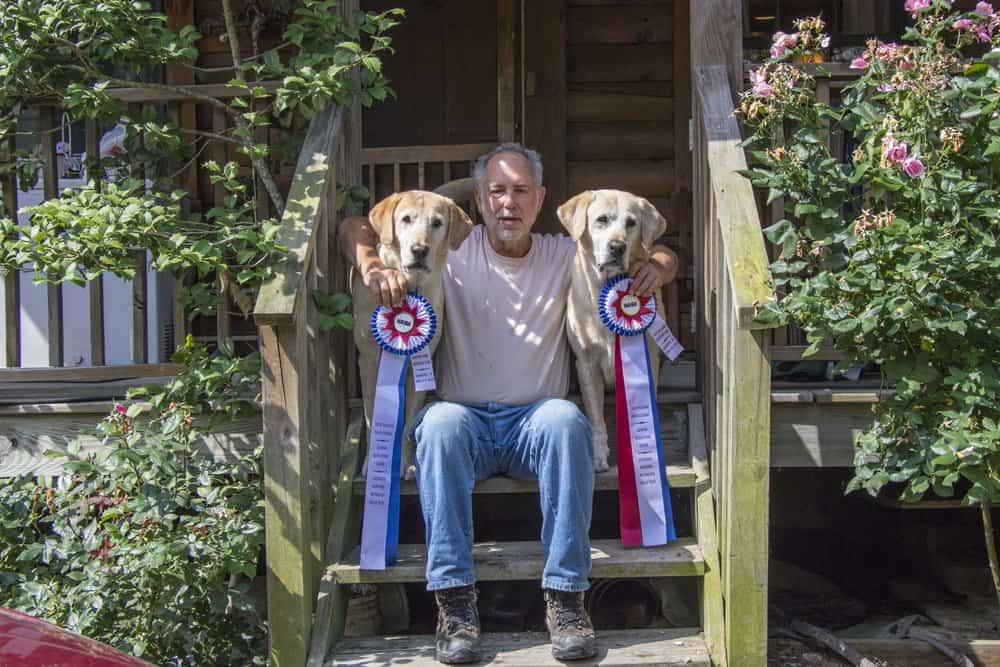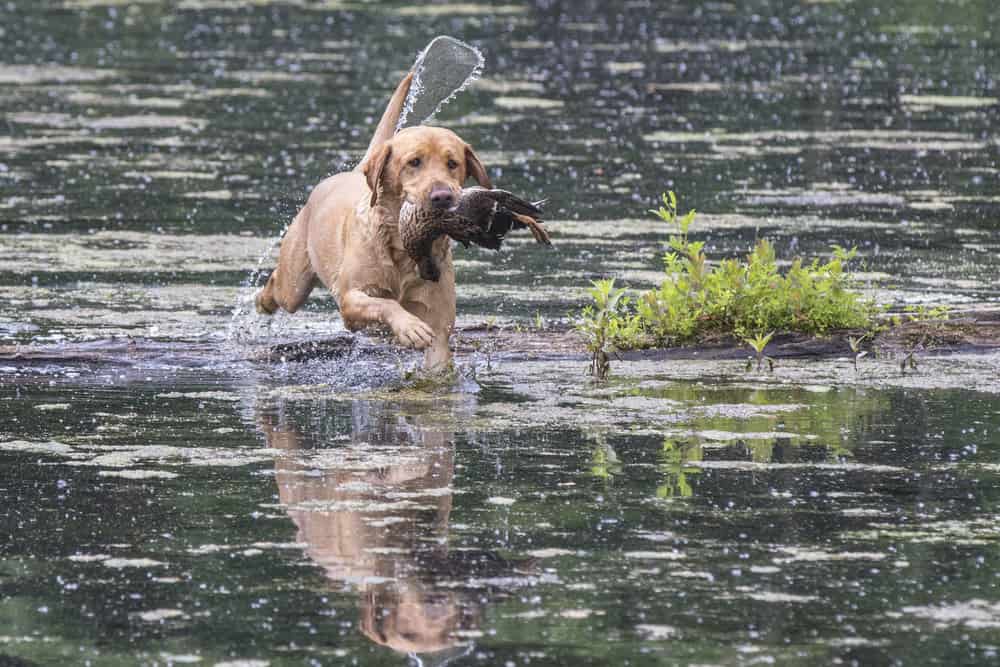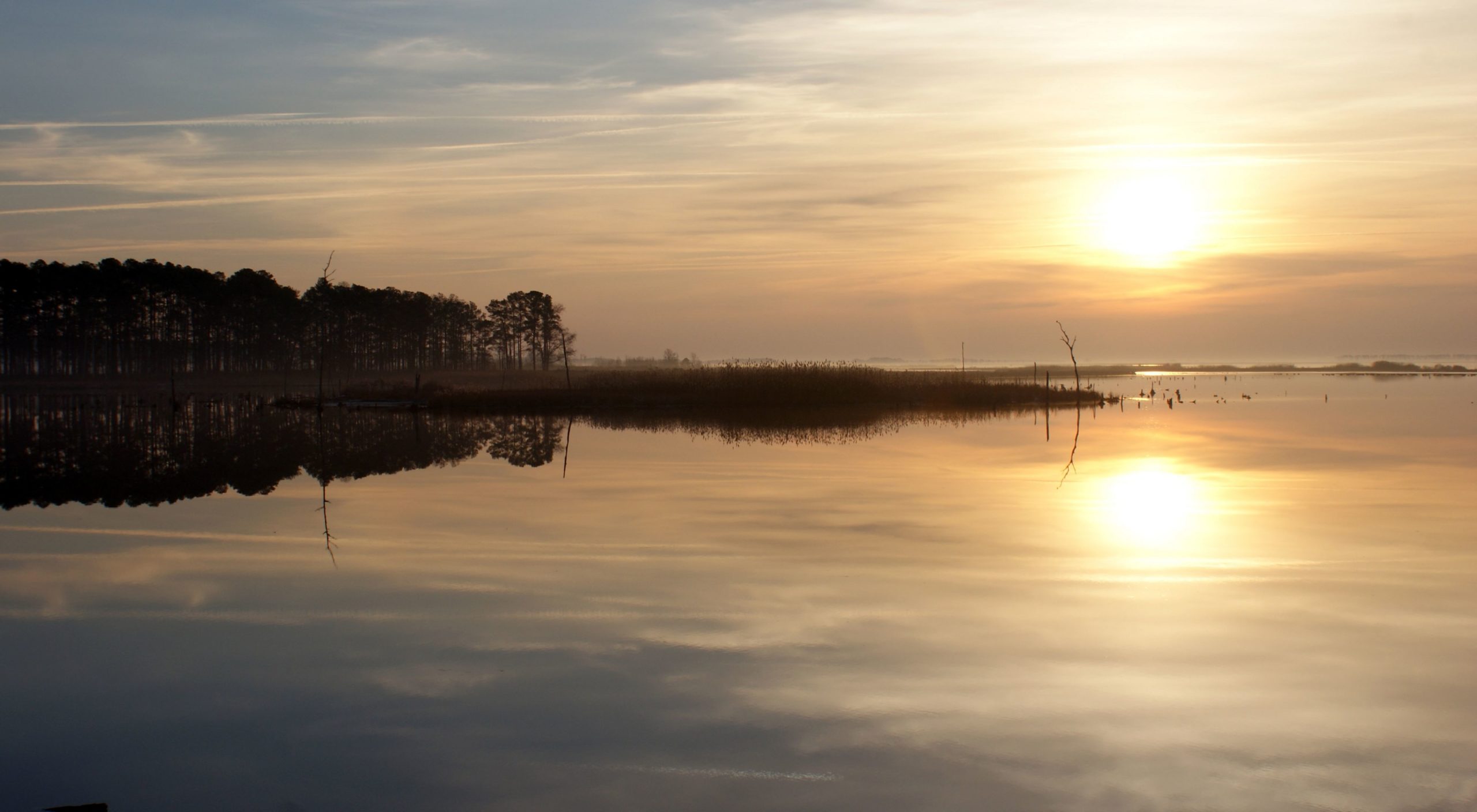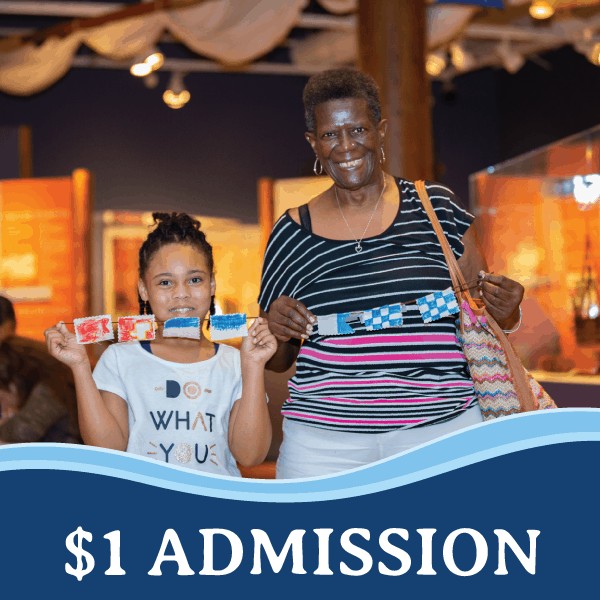Twenty-five extraordinary Labrador Retrievers and one Nova Scotia Duck Tolling Retriever came, with their handlers, from all over the country and Canada to participate in the 35th North American Hunting Retriever Association (NAHRA) Invitational in Onancock.
The dogs had to reach Master Hunter Retriever level status before getting an invitation to this national field test. They log countless miles on the road and in the air showcasing their skills to earn a place in the annual invitational. Last year’s test was held in Seattle. Next year, it will be in Anchorage.
The Eastern Shore Retrievers Club and president Larry Housman hosted the event at his and Victoria Pepper’s farm, just outside of Onancock.
The dogs compete against a set of standards set forth by the NAHRA instead of against each other. They must demonstrate proficiency in both upland and waterfowl disciplines. Field tests are realistic, simulated hunting scenarios, featuring distances and conditions that hunters would encounter in the field.
Kody Bull, the NAHRA national president who hails from Palmer, Alaska, attended the field tests over the course of three days.
“The Invitational honors and celebrates the dog and the teamwork it took to achieve the Master Hunter status needed to participate in this field test,” said Bull. “We are all rooting for each other because we are competing against a standard, not each other. There’s no first or second place here. We all hope to earn that red, white and blue ribbon at the awards ceremony.”
Many of the handlers have attended the national invitational for years and they see each other at regional events, becoming like family in the process.
“We spend a lot of time away from home, sometimes two or three weekends a month, but this is our passion, although sometimes I call it my money pit,” said Jeff Riesling of Pennsylvania, whose dog, Tank, now 13, is a Grand Master Hunter Champion and still competing when many dogs his age have retired.

Larry Housman, who owns yellow labs Bry and Hank, a Grand Master Hunter Champion VI and a Grand Master Hunter Retriever, said that the best aspect of NAHRA field tests, unlike some other competitions, is that the dogs are being handled by their owners and are also family pets. “Bry and Hank sleep in my bed, although not at the same time. They have to take turns,” said Housman, who recently added a third dog to the mix when he purchased a Black Lab puppy, Newman, whose sire and grand-sire were both national champions.
For Frank Plewa, who had two dogs in the field test, the NAHRA competition is a means of working with your dogs throughout the year. “Without NAHRA, my dogs would stop working when I put up my guns at the end of the hunting season. This is way to spend time with them and keep them sharp,” said Plewa, a wetlands specialist with the U.S Army Corps of Engineers who has been involved in NAHRA for 26 years. “I am beginning to cut back on work because the day job can really get in the way of training dogs.”
Dave Mellender, whose Yellow Lab Maxx just attended his first invitational, says a retriever is the best conservation tool available to the hunter. “Even in a field hunt, where many hunters think a retriever is not necessary, think about how many birds are wounded and run away. A hunter cannot run as fast a dog. And then he may be firing additional shots that could be saved with the use of a dog.”
Dick Ofstedal , one of three judges, visited the Eastern Shore from his home in Minnesota two months ago to preview the the competition sites, bringing his dogs to test the conditions.
“It’s an honor to be selected as a judge,” said Ofstedal. He talked about the bond between hunter and dog, which grows when the two spend so much time together. “It’s not you who picks the puppy to start this beautiful relationship. It’s the dog who looks you in the eye and picks you, and you should be forever grateful for the opportunity.”
Tony Carlo’s 8-year-old Black Lab, Teddy, a grand master hunter retriever champion, was eliminated after the first day when he did not honor another dog’s test.
“The shame of it is that Teddy scored perfect tens for his retrieves on his test, but he crept forward when the next retriever was working,” said Carlo, explaining each retriever must watch and honor the next competitor following his run without breaking from his position.
Although disappointed at Teddy’s elimination over what seems to be a minor infraction, Carlo said, “We attend the invitational for the opportunity to have the judges evaluate your dog and learn from the experience. We respect the judges and always accept their decision.”
Three women were among the handlers at this year’s invitational, including Sue Snow from Ontario, whose 10-year-old female Black Lab, Gee, is a Grand Master Hunter-V. “The NAHRA program has developed Gee into an all-around retriever who is as comfortable hunting waterfowl in the east as she is upland hunting in the west,” said Snow. “She has taken us on many adventures from Alabama to Alaska and many places in between.”
At the end of the week-long activities, Bull said the Eastern Shore had proven to be “as hospitable as any place we’ve been. The people have been just great. It’s obvious there’s a strong tradition of hunting and hunting dogs here,” added Bull
The NAHRA 35th Invitational was dedicated to one of its founding members, the late bird dog author Richard Wolters.
-Bill Sterling



